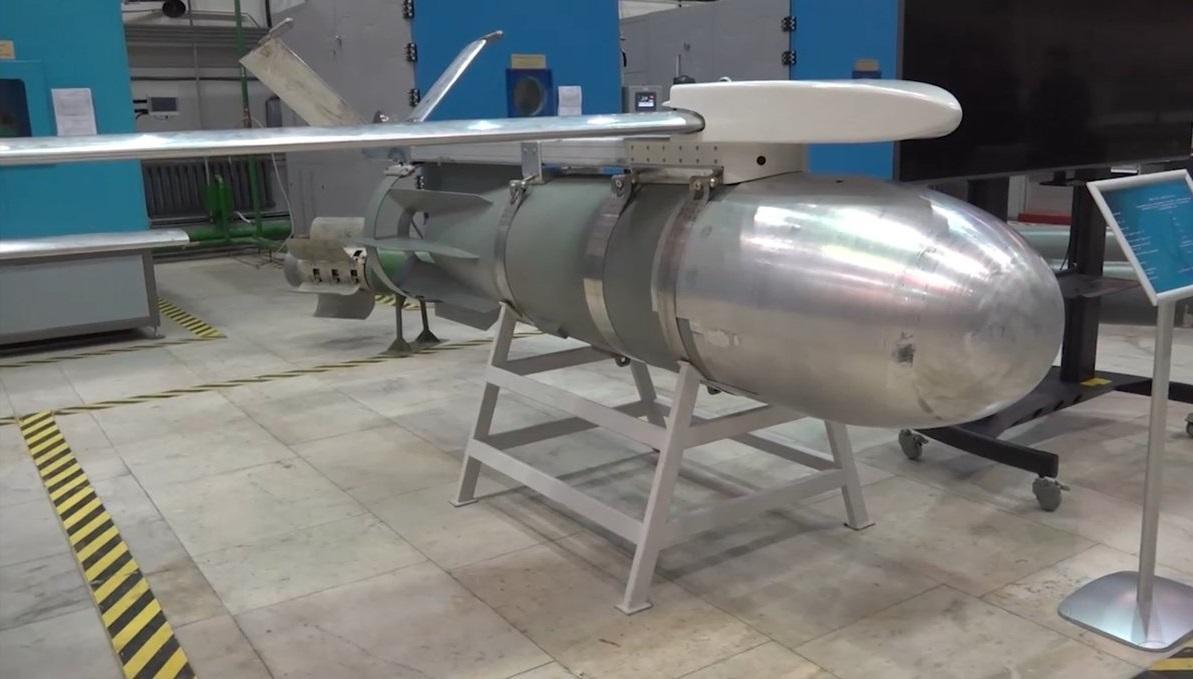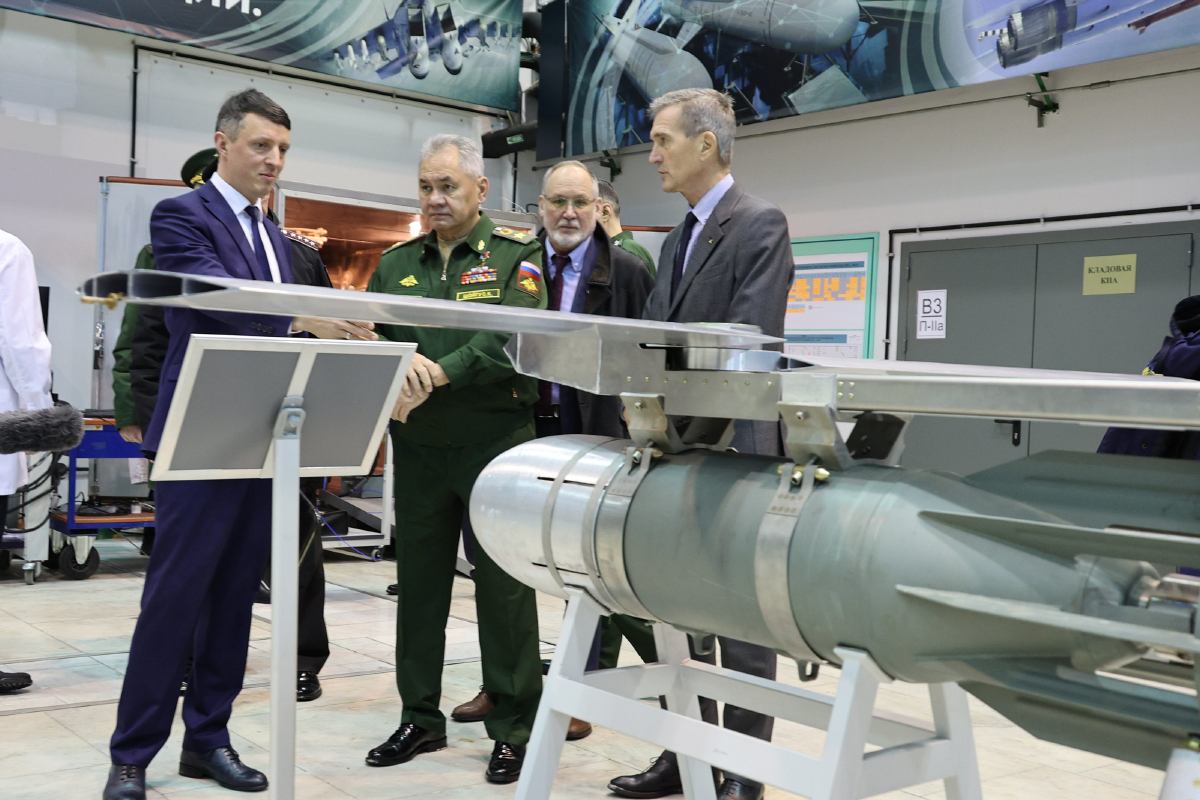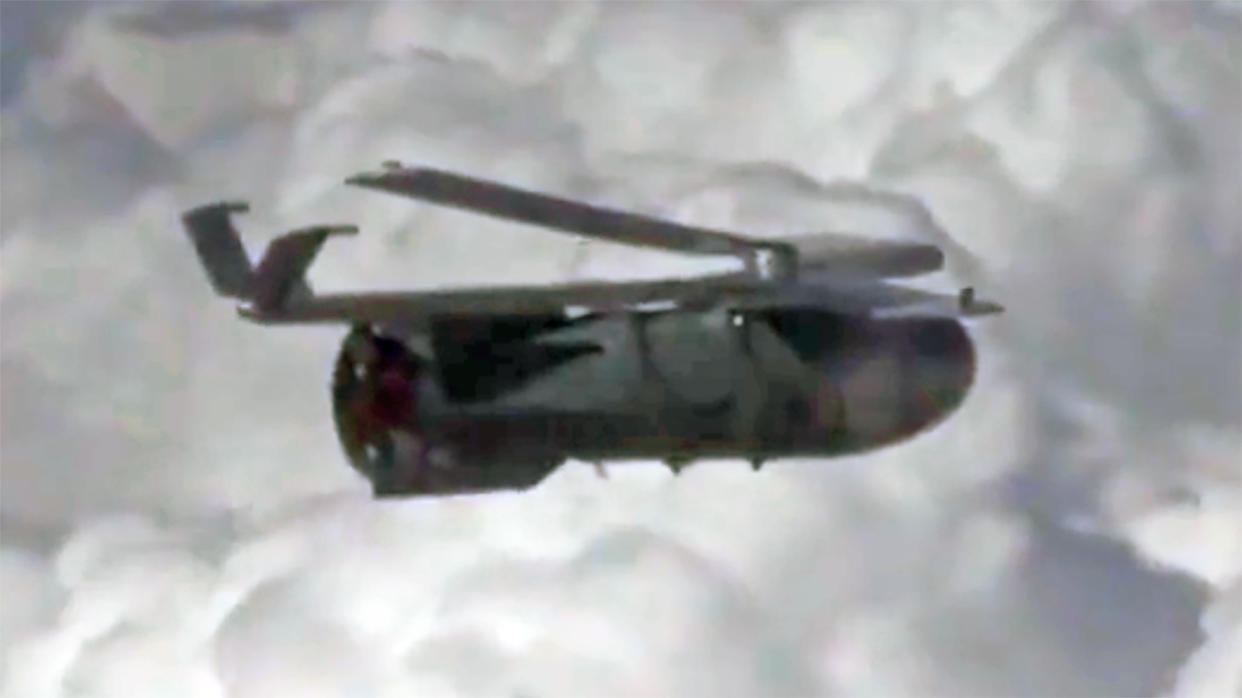Silent Killers in the Sky: Russia’s Kometa-Enhanced Glide Bombs Reshape Battlefield Dynamics in Ukraine
The Kometa system has now become a key component of the Universal Glide and Correction Module (UMPK)—short for Unifitsirovannyi Modul Planirovaniya i Korrektsii—a low-cost conversion kit that turns gravity-dropped, unguided bombs into precision-guided weapons capable of gliding over extended ranges.
(DEFENCE SECURITY ASIA) — Russia has reportedly enhanced its already formidable arsenal of glide bombs, widely deployed in its war effort against Ukraine, by integrating a sophisticated anti-jamming system known as Kometa (Comet) to further sharpen their strike accuracy amid growing electronic warfare threats.
The Kometa system has now become a key component of the Universal Glide and Correction Module (UMPK)—short for Unifitsirovannyi Modul Planirovaniya i Korrektsii—a low-cost conversion kit that turns gravity-dropped, unguided bombs into precision-guided weapons capable of gliding over extended ranges.
The UMPK, akin to the American JDAM (Joint Direct Attack Munition), retrofits legacy Soviet bombs weighing between 250kg and 500kg with foldable wings and a dual-navigation system, extending their reach while transforming basic ordnance into high-value guided munitions.
By equipping UMPK kits with the Kometa anti-jamming suite, Russian forces are significantly improving the survivability and accuracy of their glide bombs in contested airspace where Ukrainian electronic warfare (EW) systems are actively deployed to disrupt satellite-based navigation.
The Kometa-enhanced UMPK kits have introduced a new layer of electronic resilience by making the glide bombs harder to deceive or divert through jamming or spoofing, thus preserving their ability to strike within meter-level precision at targets deep behind enemy lines.
In a notable escalation, the Kometa system is also being integrated into Iranian-designed Shahed-136 loitering munitions, allowing these kamikaze drones—now mass-produced and employed by Russia—to withstand Ukraine’s growing arsenal of electronic countermeasures.
Kometa operates via a network of 12 antenna channels, which intelligently detect, discriminate, and reject spoofed signals emitted by adversarial EW systems, thereby preserving the integrity of the bomb’s guidance path toward pre-programmed targets.

This engineering advancement ensures that Russia’s UMPK-equipped bombs can continue navigating even in heavily contested EW environments, bolstering Moscow’s ability to sustain precision strikes under modern battlefield conditions.
Crucially, the UMPK guidance system integrates both Satellite Navigation Systems (SNS) and Inertial Navigation Systems (INS), providing redundancy that enables the bomb to reach its target even if satellite signals are jammed or disrupted.
In the event of GPS or GLONASS signal degradation due to Ukrainian EW systems, the bomb will switch to its INS to maintain course, ensuring mission continuity albeit with slightly reduced accuracy.
In response to this technological leap, Ukraine has fielded a new electronic warfare system codenamed “Lima”, designed specifically to counter Russia’s UMPK-guided bombs by exploiting vulnerabilities in their navigation systems.
According to available reports, Lima employs a multi-layered electronic attack approach combining jamming, signal spoofing, and cyber interference to mislead, degrade, or sever the satellite guidance relied upon by UMPK-equipped munitions.
Its developers claim that Lima utilises a next-generation Digital Suppression technique, which is far more effective at scrambling satellite-based navigation than traditional noise jamming methods.

However, defence analysts believe that Russia is preparing to intensify the deployment of UMPK-guided glide bombs armed with Kometa protection as it adapts to Ukraine’s growing EW sophistication and expands its aerial strike doctrine.
Since the summer of 2023, Russia’s adoption of UMPK kits has revolutionised its airstrike capabilities, granting it the ability to deliver standoff precision attacks without exposing its aircraft to high-risk frontline air defences.
The widespread integration of UMPK has allowed the Russian Aerospace Forces (VKS) to drastically improve both strike accuracy and operational tempo while minimising munition costs—a strategic boon in a war of attrition.
According to the Institute for the Study of War (ISW), these glide bombs are adapted from existing stockpiles of Soviet-era bombs like FAB-250, FAB-500, and FAB-1500, modified with UMPK kits to serve as long-range precision-guided munitions.
ISW also notes that several variants now incorporate laser guidance and satellite-assisted targeting, reducing their circular error probable (CEP) from 160 feet to under 16 feet, a leap that makes them viable against hardened or point-sensitive targets.
These enhanced bombs can be launched from multirole fighters such as the Su-30SM, Su-34 Fullback, and Su-35S, which now serve as the primary delivery platforms for precision munitions across multiple fronts in the Ukrainian theatre.

“Glide bombs fitted with UMPK kits can fly as far as 200 kilometers from their release point,” ISW reported, adding that this allows Russian aircraft to launch strikes while remaining outside the lethal range of Western-supplied Ukrainian air defence systems like NASAMS, IRIS-T, and Patriot.
This standoff range gives Russia a strategic edge in close air support (CAS), interdiction, and destruction of high-value assets—such as ammunition depots, troop concentrations, bridges, and command centres—without risking loss of aircraft or pilots.
The effectiveness of UMPK-guided bombs has been demonstrated across fortified combat zones, including Avdiivka, Kupiansk, and Kharkiv, where Russian glide bomb strikes have been used to devastating effect despite the presence of layered Ukrainian air defence networks.
ISW estimates that an FAB-250 bomb, weighing 250kg, can devastate targets within a 400-foot blast radius, while the FAB-500’s 500kg payload yields an 800-foot radius of destruction.
The FAB-1500, weighing over 1,500kg, delivers a staggering 1,600-foot blast radius, with sufficient penetrating force to obliterate reinforced bunkers located as deep as 20 metres underground, making it a weapon of choice for hardened targets.
“With the FAB-1500 now equipped with UMPK kits, Russia can effectively neutralise deeply buried fortifications with pinpoint accuracy,” one military analyst observed, noting the immense challenge posed to Ukrainian air defences.

Ukraine’s current air defence systems—designed primarily to intercept cruise missiles, drones, or aircraft—are ill-suited to neutralising glide bombs that silently fall from high altitude and travel at high speed without radar signatures.
“Ukraine’s air defence has failed to intercept glide bombs launched from Russian fighter jets,” Ukrainian Air Force Command spokesman Yuriy Ihnat previously stated.
“This represents a growing threat—500kg bombs that now glide to their targets thanks to the addition of UMPK wing kits,” he warned, highlighting the increasing challenge for Ukrainian forces.
In totality, Russia’s deployment of the UMPK system, especially with the Kometa anti-jamming upgrade, is transforming the character of modern aerial warfare—delivering cost-effective, high-precision firepower from safe distances and redefining strategic dynamics across the Ukrainian battlespace.
— DEFENCE SECURITY ASIA


